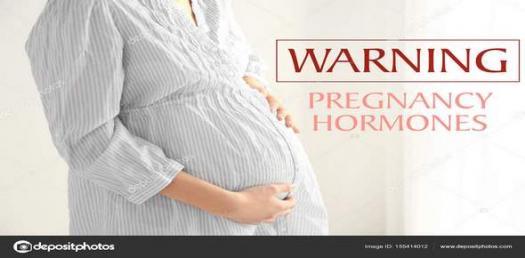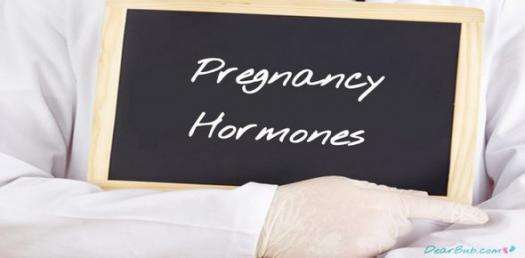Pregnancy Hormones Quiz
(496).jpg)
More often than not, women claim to experience significant changes in their body after conception. Interestingly, medicine has explained the changes to be the result of the actions of several biological chemicals called hormones. The knowledge of the production, release, and mechanism of action of these hormones is important. Do you know them? Take this simple quiz then!
- 1.
Which of these hormones does not increase during pregnancy?
- A.
Testosterone
- B.
Progesterone
- C.
Estrogens
- D.
Human chorionic gonadotropin
Correct Answer
A. TestosteroneExplanation
During pregnancy, the levels of progesterone, estrogens, and human chorionic gonadotropin (hCG) increase significantly. These hormones play crucial roles in maintaining pregnancy, promoting fetal development, and preparing the body for childbirth. However, testosterone levels do not increase during pregnancy. Testosterone is primarily produced in the testes in males and in smaller amounts in the ovaries in females. Its levels remain relatively stable during pregnancy as it is not involved in the physiological changes necessary for gestation and fetal development.Rate this question:
-
- 2.
Which of these produces progesterone?
- A.
Hypothalamus
- B.
Kidney
- C.
Bone marrow
- D.
Placenta
Correct Answer
D. PlacentaExplanation
The placenta is responsible for producing progesterone. During pregnancy, the placenta takes over the production of hormones, including progesterone, which is essential for maintaining the pregnancy. Progesterone plays a crucial role in preparing the uterus for implantation of the fertilized egg, maintaining the uterine lining, and preventing contractions that could lead to premature labor. It also helps in the development of breast tissue and prepares the body for lactation. Therefore, the correct answer is the placenta.Rate this question:
-
- 3.
Which of these hormones stimulate the release of the female gamete?
- A.
Progesterone
- B.
Estriol
- C.
Calcitonin
- D.
Follicle stimulating hormone
Correct Answer
D. Follicle stimulating hormoneExplanation
Follicle stimulating hormone (FSH) is responsible for stimulating the release of the female gamete, which is the egg or ovum. FSH is produced by the pituitary gland and plays a crucial role in the menstrual cycle and ovulation. It stimulates the growth and development of ovarian follicles, which contain the eggs. When the follicles mature, FSH triggers the release of the egg from the ovary, allowing it to be fertilized by sperm. Progesterone and estriol are female sex hormones involved in the regulation of the menstrual cycle and pregnancy, while calcitonin is a hormone involved in calcium regulation.Rate this question:
-
- 4.
Which of these produces the follicle-stimulating hormone?
- A.
Anterior pituitary gland
- B.
Posterior pituitary gland
- C.
Spleen
- D.
Bone marrow
Correct Answer
A. Anterior pituitary glandExplanation
The anterior pituitary gland produces the follicle-stimulating hormone. The follicle-stimulating hormone is responsible for the growth and development of ovarian follicles in females and sperm production in males. It plays a crucial role in the regulation of reproductive processes and is released by the anterior pituitary gland in response to signals from the hypothalamus. The other options, including the posterior pituitary gland, spleen, and bone marrow, do not produce the follicle-stimulating hormone.Rate this question:
-
- 5.
What is the molecular weight of follicle-stimulating hormone?
- A.
1790
- B.
1880
- C.
1885
- D.
1783
Correct Answer
C. 1885Explanation
The molecular weight of follicle-stimulating hormone is 1885.Rate this question:
-
- 6.
Which of these hormones is a neuropeptide?
- A.
Testosterone
- B.
Oxytocin
- C.
Progesterone
- D.
Follicle stimulating hormone
Correct Answer
B. OxytocinExplanation
Oxytocin is a neuropeptide hormone produced in the hypothalamus and released by the pituitary gland. It plays a crucial role in social bonding, trust, and maternal-infant attachment. Oxytocin acts as a neurotransmitter in the brain, regulating various physiological processes such as childbirth, lactation, and sexual behavior. Unlike testosterone, progesterone, and follicle stimulating hormone, which are primarily involved in reproductive functions, oxytocin functions as a neuropeptide, affecting various aspects of social and emotional behavior.Rate this question:
-
- 7.
Which of these hormones stimulates lactation?
- A.
Human chorionic gonadotropin
- B.
Calcitonin
- C.
Oxytocin
- D.
Testosterone
Correct Answer
C. OxytocinExplanation
Oxytocin is the hormone that stimulates lactation. It is produced in the hypothalamus and released by the pituitary gland. Oxytocin plays a crucial role in the milk let-down reflex, which is the process by which milk is released from the mammary glands. It stimulates the contraction of the smooth muscles around the milk ducts, allowing milk to be ejected from the breasts. Oxytocin is also involved in bonding and social behavior, as it is released during childbirth and breastfeeding, promoting maternal-infant bonding.Rate this question:
-
- 8.
Which of these is not a gonadotropin?
- A.
Follicle stimulating hormone
- B.
Calcitonin
- C.
Luteinizing hormone
- D.
Progesterone
Correct Answer
B. CalcitoninExplanation
Calcitonin is not a gonadotropin. Gonadotropins are hormones that regulate the function of the gonads (ovaries and testes), including the production of sex hormones and the release of eggs and sperm. Follicle stimulating hormone (FSH), luteinizing hormone (LH), and progesterone are all gonadotropins involved in the reproductive system. Calcitonin, on the other hand, is a hormone produced by the thyroid gland that regulates calcium levels in the body. It is not involved in the regulation of the gonads or reproductive system.Rate this question:
-
- 9.
Which of these is responsible for the stretching of the cervix?
- A.
Prolactin
- B.
Relaxin
- C.
Oxytocin
- D.
Estrogen
Correct Answer
C. OxytocinExplanation
Oxytocin is responsible for the stretching of the cervix. Oxytocin is a hormone that is released during childbirth and plays a crucial role in initiating and regulating contractions of the uterus. These contractions help to stretch and dilate the cervix, allowing the baby to pass through the birth canal. Oxytocin also helps in the bonding between the mother and the baby by promoting feelings of love and attachment.Rate this question:
-
- 10.
Who discovered oxytocin?
- A.
John Roberts
- B.
Ivan Pavlov
- C.
Charles Darwin
- D.
Henry Dale
Correct Answer
D. Henry DaleExplanation
Henry Dale is the correct answer because he is the scientist who discovered oxytocin. Oxytocin is a hormone that plays a crucial role in various physiological processes, including childbirth, lactation, and social bonding. Henry Dale's discovery of this hormone has had a significant impact on our understanding of reproductive and social behaviors in both humans and animals.Rate this question:
-
Quiz Review Timeline +
Our quizzes are rigorously reviewed, monitored and continuously updated by our expert board to maintain accuracy, relevance, and timeliness.
-
Current Version
-
Apr 28, 2023Quiz Edited by
ProProfs Editorial Team -
Jan 09, 2019Quiz Created by
AdewumiKoju












